1. Tablet Use and Management
1.1. Tablet 1x1
1.2. Accessories
1.3. Accessibility Features
1.4. Media Features and Apps
1.4.1. Taking and Editing Pictures
1.4.2. Making and Editing Videos
1.4.3. Audio recording and Editing
1.4.4. Writing with the Tablet
1.5. Implementation and Management of Tablets
2. Tablets in the Inclusive Classroom
2.1. Basic Education
2.1.1. Literacy
2.1.1.1. Reading
2.1.1.1.1. Lesefertigkeit
2.1.1.1.2. Lesefähigkeit
2.1.1.2. Writing
2.1.1.2.1. Graphomotorik
2.1.1.2.2. Silben, Wörter und Sätze schreiben
2.1.1.2.3. Texte planen, verfassen, überarbeiten
2.1.1.3. Grammar and Language structure
2.1.1.3.1. basic vocabulary
2.1.1.3.2. grammatical structures and rules
2.1.1.3.3. means of expression
2.1.2. Numeracy
2.1.2.1. Theory of sets
2.1.2.2. arithmetic operations
2.1.2.3. units (of measurement)
2.1.2.4. Geometry
2.1.2.5. General mathematical competences
2.1.2.5.1. Modelling
2.1.2.5.2. Operating
2.1.2.5.3. Communicating
2.1.2.5.4. Problem solving
2.1.3. Music
2.1.3.1. Singing
2.1.3.2. Rhythm training
2.1.3.3. Music History
2.1.3.4. Notation
2.1.4. Arts
2.1.5. Physical Exercise/Sports
2.1.5.1. Video Analysis
2.1.5.2. Anatomy
2.1.5.3. Watch App
2.1.5.4. Runtastic
2.2. Digital Media Literacy
2.2.1. Finding and processing digital media content
2.2.2. Creating digital media content
2.2.3. Organising and sharing media content
2.2.4. Critical understanding of legal conditions that affect the use of digital media
2.3. Life & Study Skills
2.3.1. Organising my mobility
2.3.2. Organising my information
2.3.3. Organising my time
2.3.4. Organising my tasks
2.4. Foreign Languages
2.4.1. Teaching and learning languages with Tablets
2.4.2. Listening
2.4.3. Reading
2.4.4. Writing
2.4.5. Vocabulary and Phonetics
2.4.6. Conversation
2.4.7. Grammar and Language Structure
2.5. STEAM - Science, Technology, Engineering, the Arts and Mathematics
2.5.1. Science
2.5.1.1. Biology
2.5.1.2. Chemistry
2.5.1.3. Physics
2.5.1.4. Astronomy
2.5.2. Technology
2.5.3. Engineering
2.5.4. Maths
2.6. Arts & Humanities
2.6.1. Visual Arts
2.6.1.1. Drawing
2.6.1.2. Painting
2.6.1.3. Ceramics
2.6.1.4. Photography
2.6.1.5. ...
2.6.2. Performing Arts
2.6.2.1. Music
2.6.2.2. Theatre
2.6.2.3. Dance
2.6.3. Literature
2.6.4. Classics
2.6.5. History
2.6.6. Philosophy
2.6.7. Religion
3. Inclusive Pedagogy with Tablets
3.1. Personalised learning with Tablets
3.1.1. Applying Person centred working principles to teaching and learning
3.1.2. Applying universal design principles to teaching and learning
3.1.3. Applying Multimedia Advocacy principles to teaching and learning.
3.2. Best Practices of Inclusive Education
3.2.1. Success Stories
3.2.2. The Finnish Education System
3.2.3. Raising the achievement of all Learners
3.3. Paperless Classroom
3.3.1. Blended Learning platforms
3.3.2. File Management and Sharing
3.3.3. Mobile Assessment methods
3.3.4. Mobile Collaboration
3.4. Activate your learners
3.4.1. Activating tools for teaching and learning
3.4.2. Augmented Reality Apps
3.5. Content Creation
3.5.1. eBooks
3.5.2. Presentations
3.5.3. Web-based learning content
3.5.4. Digital Flashcards and game-based learning
3.5.5. Mind Maps
3.5.6. Educational Videos
